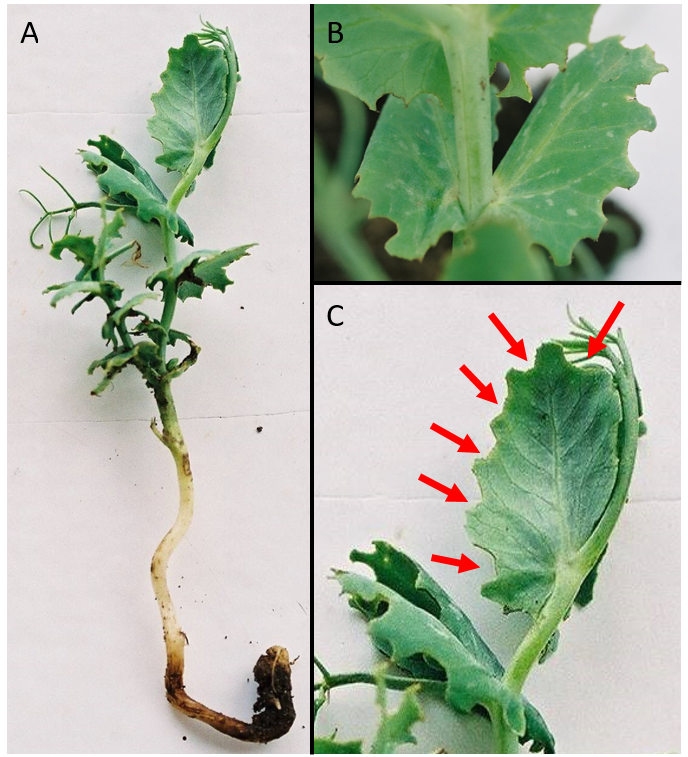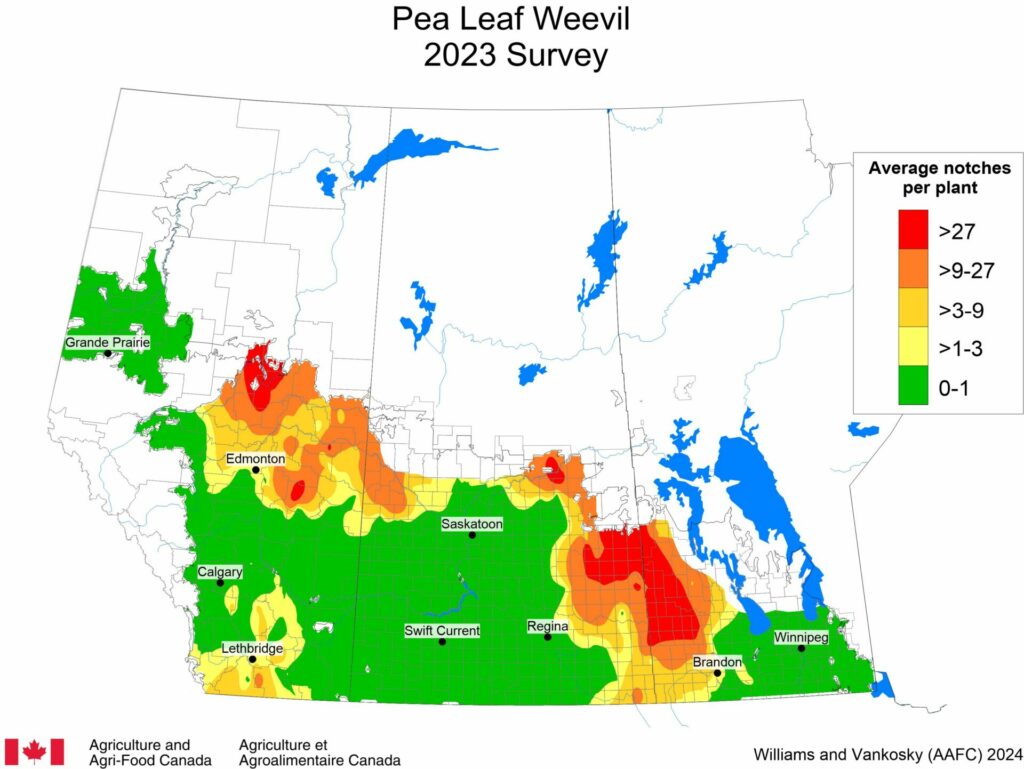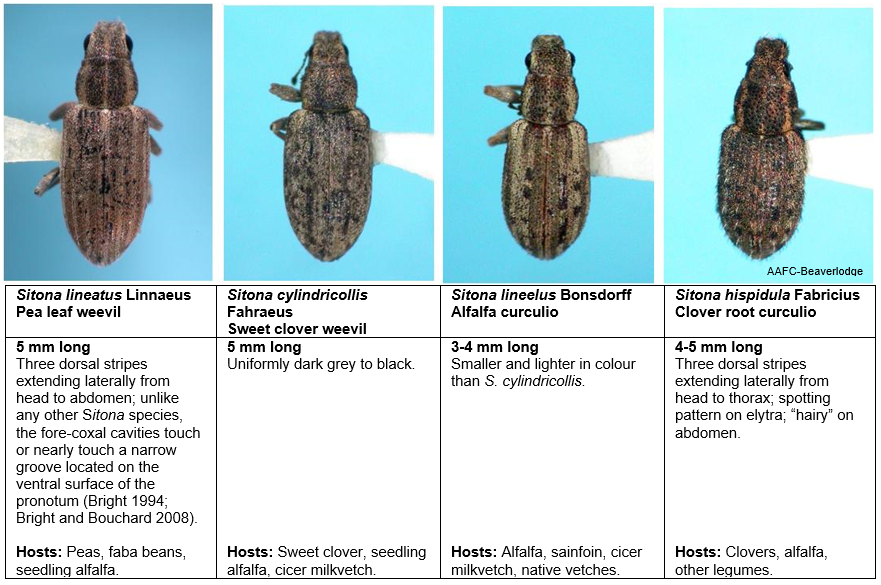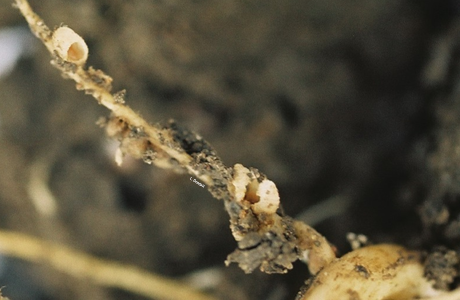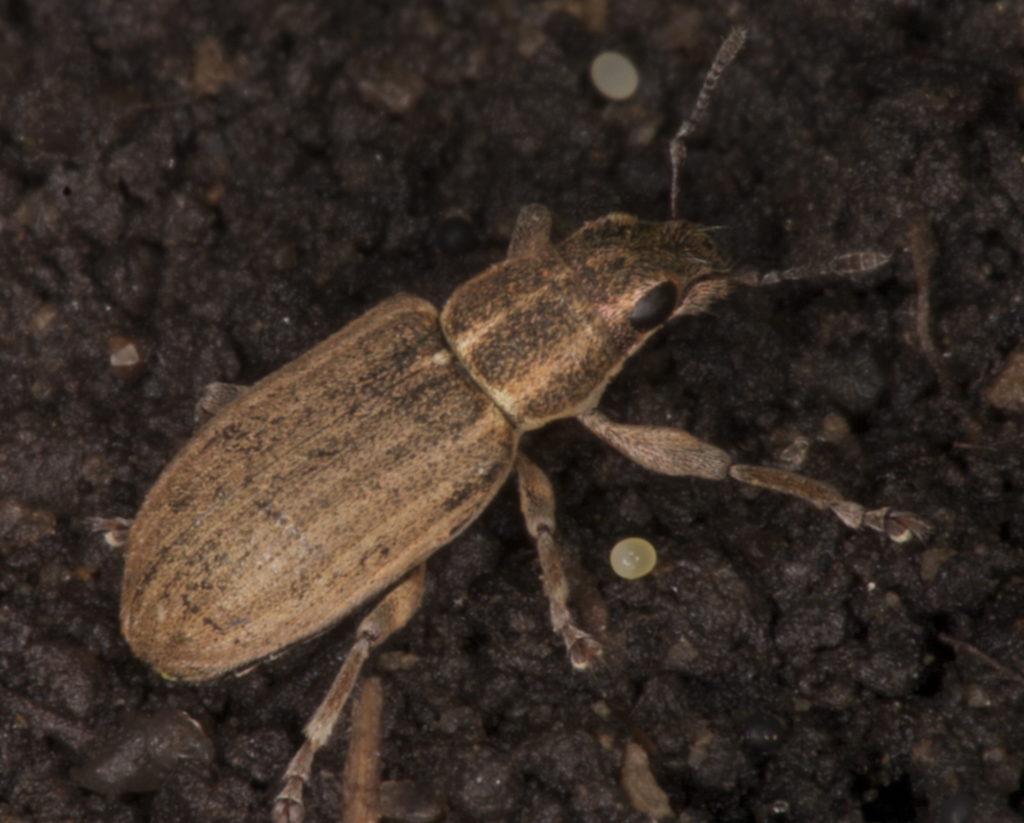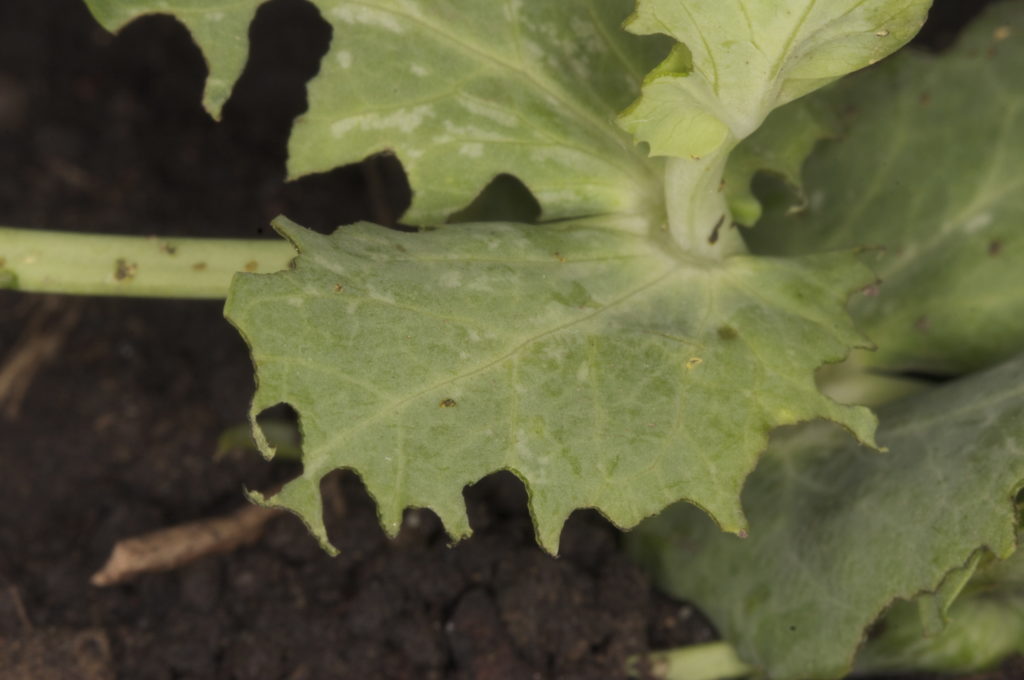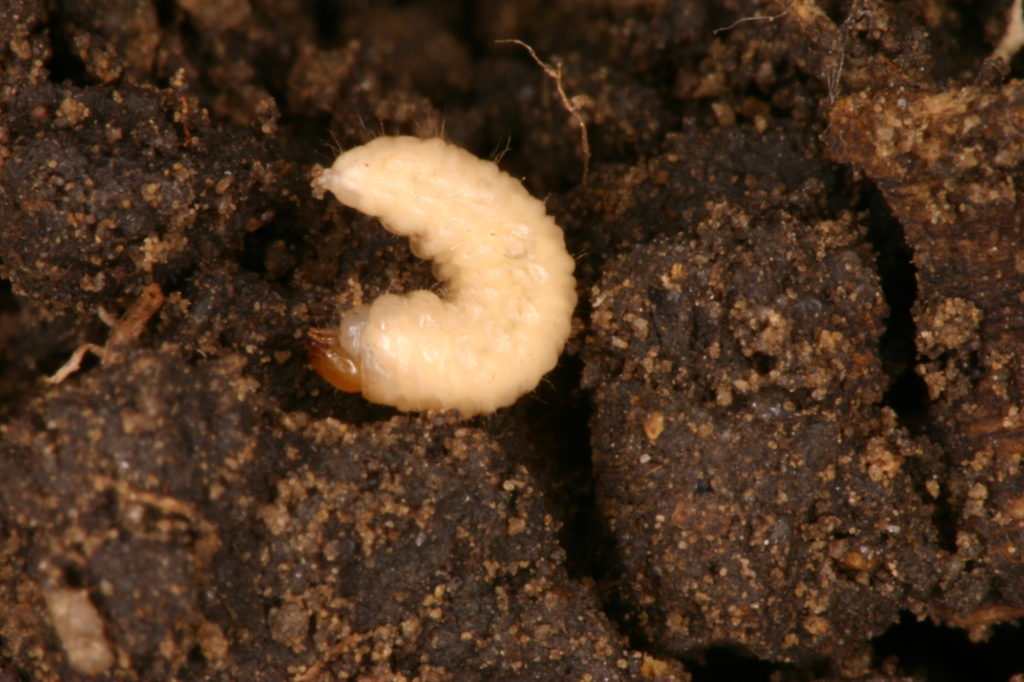The annual pea leaf weevil survey is underway! If you have field peas this year, please consider volunteering your fields for this survey. The survey is conducted by counting the characteristic ‘u’ shaped feeding notches made by adult pea leaf weevil at several locations along the field edge.
Adult pea leaf weevil could now be dispersing into emerging field pea and faba bean fields. Watch for ‘u’-shaped notches along the leaf margins of emerging seedlings – for more information about the damage caused to crops by pea leaf weevil, check out the Week 4 Insect of the Week post.
Live adult pea leaf weevil are needed for experiments this spring, so if you are finding weevils in your crops, please contact Dr. Meghan Vankosky (AAFC-Saskatoon; meghan.vankosky@agr.gc.ca). Thank you!
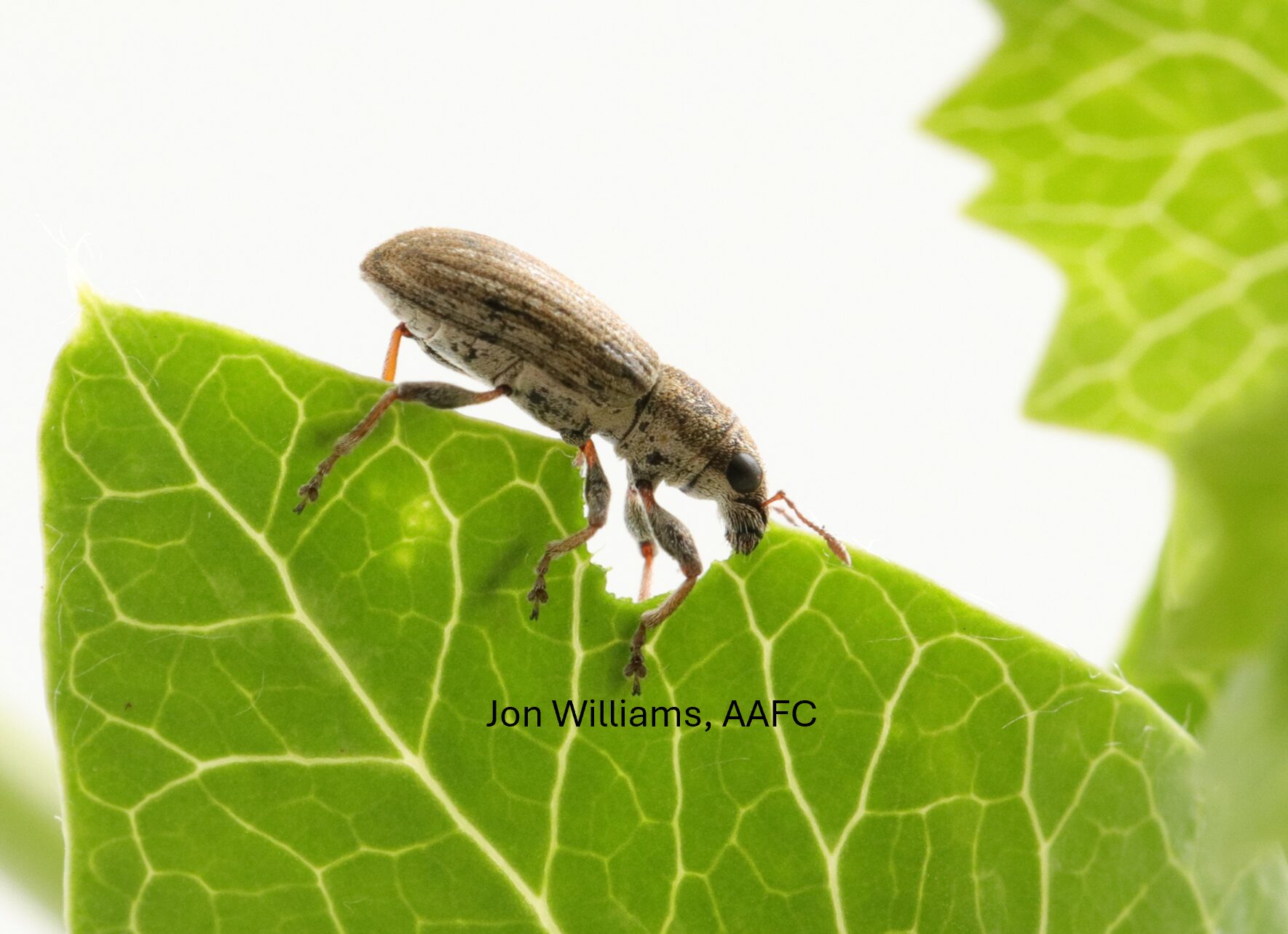
Biological and monitoring information related to pea leaf weevil in field crops is posted by the province of Alberta and in the PPMN monitoring protocol. Also access the Pea leaf weevil page re and Resource Development, Saskatchewan Agriculture, Alberta Agriculture and Forestry, the BC Ministry of Agriculture, and the Prairie Pest Monitoring Network. Also refer to the pea leaf weevil page within the “Field Crop and Forage Pests and their Natural Enemies in Western Canada: Identification and management field guide” (2018) accessible as a free downloadable PDF in either English or French on our Field Guides page.

